Numerical Simulation of the Seismic Damage of Daikai Station Based on Pushover Analyses
Abstract
:1. Introduction
2. Observed Seismic Damage at Daikai Station
3. Simplified Seismic Analysis of the Original Daikai Station
3.1. Structural Description of the Original Daikai Station
3.2. Internal Forces
4. Pushover Analysis of the Original and New Central Columns
4.1. Analysis Method
4.2. FEM and Material Parameters
4.3. Analysis Results
5. Pushover Analysis of Soil-Structure System
5.1. Analysis Method
5.2. FEM and Material Parameters
5.3. Analysis Results
6. Conclusions
- The pseudo-static pushover analysis reproduces the seismic damage of Dakai subway station by applying horizontal and vertical inertial forces to the soil, and reveals its failure mechanism. Compared with the dynamic time-history analysis method, this method is simple in operation and efficient in calculation for the single-layer double-span structure.
- When considering the effect of vertical ground motion, the axial compression ratio of the central columns in Daikai station increases significantly. The performance curves of the central columns obtained from the pushover process at both component and structural levels show brittle damage. In other words, the deformation capacity of the central column in the original Daikai station with ordinary reinforced concrete under a high axial compression ratio is insufficient. Finally, it causes the overall collapse of the structure.
- In contrast, the lateral and longitudinal span of the subway tunnel is much smaller than that of Daikai station. Even under the consideration of the vertical ground motion, the axial force of the central columns in the tunnel is not large, and it still maintains good ductility under horizontal load. Therefore, severe damage to the subway tunnel structure does not appear.
- The central columns of the new Daikai station equipped with concrete-filled steel tube exhibit high bearing capacity and ductility performance even under a large axial compression ratio. No collapse like the original subway occurred under the same seismic load in the new station, thereby significantly improving the structural seismic performance.
Author Contributions
Funding
Data Availability Statement
Conflicts of Interest
References
- Amorosi, A.; Boldini, D. Numerical modelling of the transverse dynamic behaviour of circular tunnels in clayey soils. Soil Dyn. Earthq. Eng. 2009, 29, 1059–1072. [Google Scholar] [CrossRef]
- Cilingir, U.; Madabhushi, S.P.G. Effect of depth on the seismic response of square tunnels. Soils Found. 2011, 51, 449–457. [Google Scholar] [CrossRef] [Green Version]
- Tsinidis, G. Response characteristics of rectangular tunnels in soft soil subjected to transversal ground shaking. Tunn. Undergr. Space Technol. 2017, 62, 1–22. [Google Scholar] [CrossRef]
- Du, X.; Li, Y.; Xu, C.; Lu, D.; Xu, Z.; Jin, L. Review on damage causes and disaster mechanism of Daikai subway station during 1995 Osaka-Kobe Earthquake. Chin. J. Geotech. Eng. 2018, 40, 223–236. [Google Scholar]
- Elnashai, A.S. Analysis of the damage potential of the Kocaeli (Turkey) earthquake of 17 August 1999. Eng. Struct. 2000, 22, 746–754. [Google Scholar] [CrossRef]
- Wang, W.L.; Wang, T.T.; Su, J.J.; Lin, C.H.; Huang, T.H. Assessment of damage in mountain tunnels due to the Taiwan Chi-Chi Earthquake. Tunn. Undergr. Space Technol. 2001, 16, 133–150. [Google Scholar] [CrossRef]
- Li, T. Damage to mountain tunnels related to the Wenchuan earthquake and some suggestions for aseismic tunnel construction. Bull. Eng. Geol. Environ. 2012, 71, 297–308. [Google Scholar] [CrossRef]
- Hashash, Y.M.A.; Hook, J.J.; Schmidt, B.; Yao, J.I.-C. Seismic design and analysis of underground structures. Tunn. Undergr. Space Technol. 2001, 16, 247–293. [Google Scholar] [CrossRef]
- Huo, H.; Bobet, A.; Fernández, G.; Ramírez, J. Load transfer mechanisms between underground structure and surrounding ground: Evaluation of the failure of the Daikai station. J. Geotech. Geoenviron. Eng. 2005, 131, 1522–1533. [Google Scholar] [CrossRef]
- Chen, C.H.; Wang, T.T.; Jeng, F.S.; Huang, T.H. Mechanisms causing seismic damage of tunnels at different depths. Tunn. Undergr. Space Technol. 2012, 28, 31–40. [Google Scholar] [CrossRef]
- Debiasi, E.; Gajo, A.; Zonta, D. On the seismic response of shallow-buried rectangular structures. Tunn. Undergr. Space Technol. 2013, 38, 99–113. [Google Scholar] [CrossRef]
- Penzien, J. Seismically induced racking of tunnel linings. Earthq. Eng. Struct. Dyn. 2000, 29, 683–691. [Google Scholar] [CrossRef]
- Moss, R.E.S.; Crosariol, V.A. Scale model shake table testing of an underground tunnel cross section in soft clay. Earthq. Spectra 2013, 29, 1413–1440. [Google Scholar] [CrossRef]
- Kawamata, Y.; Nakayama, M.; Towhata, I.; Yasuda, S. Dynamic behaviors of underground structures in E-Defense shaking experiments. Soil Dyn. Earthq. Eng. 2016, 82, 24–39. [Google Scholar] [CrossRef]
- Ma, X.; Wang, G.; Wu, J.; Ji, Q. Experimental study on the seismic response of subway station in soft ground. J. Earthq. Tsunami 2017, 11, 1750020. [Google Scholar]
- Zhuang, H.; Hu, Z.; Wang, X.; Chen, G. Seismic responses of a large underground structure in liquefied soils by FEM numerical modelling. Bull. Earthq. Eng. 2015, 13, 3645–3668. [Google Scholar] [CrossRef]
- Xu, Z.; Du, X.; Xu, C.; Hao, H.; Bi, K.; Jiang, J. Numerical research on seismic response characteristics of shallow buried rectangular underground structure. Soil Dyn. Earthq. Eng. 2019, 116, 242–252. [Google Scholar] [CrossRef]
- Xu, Z.; Zhuang, H.; Xia, Z.; Yang, J.; Bu, X. Study on the effect of burial depth on seismic response and seismic intensity measure of underground structures. Soil Dyn. Earthq. Eng. 2023, 166, 107782. [Google Scholar] [CrossRef]
- Iida, H.; Hiroto, T.; Yoshida, N.; Iwafuji, M. Damage to Daikai subway station. Soils Found. 1996, 36, 283–300. [Google Scholar] [CrossRef] [PubMed] [Green Version]
- Iwatate, T.; Kobayashi, Y.; Kusu, H.; Rin, K. Investigation and shaking table tests of subway structures of the Hyogoken-Nanbu earthquake. In Proceedings of the 12th World Conference on Earthquake Engineering, Auckland, New Zealand, 30 January–4 February 2000. [Google Scholar]
- Yamato, T.; Umehara, T.; Aoki, H.; Nakamura, S.; Ezaki, J.; Suetomi, I. Damage to Daikai subway station of Kobe rapid transit system and estimation of its reason during the 1995 Hyogoken-Nanbu earthquake. Doboku Gakkai Ronbunshu 1996, 1996, 303–320. [Google Scholar] [CrossRef] [PubMed] [Green Version]
- An, X.; Shawky, A.A.; Maekawa, K. The collapse mechanism of a subway station during the Great Hanshin earthquake. Cem. Concr. Compos. 1997, 19, 241–257. [Google Scholar] [CrossRef]
- Huo, H. Seismic Design and Analysis of Rectangular Underground Structures; Purdue University: West Lafayette, IN, USA, 2005. [Google Scholar]
- Zhuang, H.Y.; Cheng, S.G.; Chen, G.X. Numerical simulation and analysis of earthquake damages of Dakai metro station caused by Kobe earthquake. Rock Soil Mech. 2008, 29, 245–250. [Google Scholar]
- Liu, J.; Liu, X. Pushover analysis of Daikai subway station during the Osaka-Kobe earthquake in 1995. In Proceedings of the 14th World Conference on Earthquake Engineering, Beijing, China, 12–17 October 2008. [Google Scholar]
- Du, X.; Xu, Z.; Xu, C. Inertia force-displacement method for seismic analysis of shallow buried underground structures. Chin. J. Geotech. Eng. 2018, 40, 583–591. [Google Scholar]
- Li, W.; Chen, Q. Seismic performance and failure mechanism of a subway station based on nonlinear finite element analysis. KSCE J. Civ. Eng. 2018, 22, 765–776. [Google Scholar] [CrossRef]
- Dong, R.; Jing, L.; Li, Y.; Yin, Z.; Wang, G.; Xu, K. Seismic deformation mode transformation of rectangular underground structure caused by component failure. Tunn. Undergr. Space Technol. 2020, 98, 103298. [Google Scholar] [CrossRef]
- Che, A.; Iwatate, T. Shaking table test and numerical simulation of seismic response of subway structures. In Structures Under Shock and Impact VII; WIT Press: Southampton, UK, 2002; p. 10. [Google Scholar]
- Xu, C.; Zhang, Z.; Li, Y.; Du, X. Validation of a numerical model based on dynamic centrifuge tests and studies on the earthquake damage mechanism of underground frame structures. Tunn. Undergr. Space Technol. 2020, 104, 103538. [Google Scholar] [CrossRef]
- Parra-Montesinos, G.J.; Bobet, A.; Ramirez, J.A. Evaluation of soil-structure interaction and structural collapse in Daikai subway station during Kobe earthquake. ACI Struct. J. 2006, 103, 113. [Google Scholar]
- Ma, C.; Lu, D.-C.; Du, X.-L.; Qi, C.-Z.; Zhang, X.-Y. Structural components functionalities and failure mechanism of rectangular underground structures during earthquakes. Soil Dyn. Earthq. Eng. 2019, 119, 265–280. [Google Scholar] [CrossRef]
- Chen, Z.Y.; Chen, W.; Bian, G.Q. Seismic performance upgrading for underground structures by introducing shear panel dampers. Adv. Struct. Eng. 2014, 17, 1343–1357. [Google Scholar] [CrossRef]
- Ma, C.; Lu, D.; Du, X. Seismic performance upgrading for underground structures by introducing sliding isolation bearings. Tunn. Undergr. Space Technol. 2018, 74, 1–9. [Google Scholar] [CrossRef]
- Xu, Z.; Du, X.; Xu, C.; Han, R. Numerical analyses of seismic performance of underground and aboveground structures with friction pendulum bearings. Soil Dyn. Earthq. Eng. 2020, 130, 105967. [Google Scholar] [CrossRef]
- Liu, J.B.; Wang, W.H.; Zhao, D.D.; Zhang, X.B. Integral response deformation method for seismic analysis of underground structure. Chin. J. Rock Mech. Eng. 2013, 32, 1618–1624. [Google Scholar]
- Xu, Z.; Du, X.; Xu, C.; Jiang, J.; Han, R. Simplified equivalent static methods for seismic analysis of shallow buried rectangular underground structures. Soil Dyn. Earthq. Eng. 2019, 121, 1–11. [Google Scholar] [CrossRef]
- Zhuang, H.Y.; Chen, G.X.; Liang, Y.X.; Xu, M. A developed dynamic viscoelastic constitutive relations of soil and implemented by ABAQUS software. Rock Soil Mech. 2007, 28, 436–442. [Google Scholar]
- Liu, J.; Wang, W.; Dasgupta, G. Pushover analysis of underground structures: Method and application. Sci. China Technol. Sci. 2014, 57, 423–437. [Google Scholar] [CrossRef]
- Jiang, J.; Xu, C.; Naggar, H.; Du, X.; Assaf, J. Improved pushover method for seismic analysis of shallow buried underground rectangular frame structure. Soil Dyn. Earthq. Eng. 2021, 140, 106363. [Google Scholar] [CrossRef]
- Zhuang, H.Y.; Ren, J.W.; Wang, W.; Miao, Y.; Chen, G.X. Elasto-plastic working states and seismic performance levels of frame-type subway underground station with two layers and three spans. Chin. J. Geotech. Eng. 2019, 41, 131–138. [Google Scholar]
- Du, X.; Jiang, J.; Naggar, M.H.E.; Xu, C.; Xu, Z. Interstory drift ratio associated with performance objectives for shallow-buried multistory and span subway stations in inhomogeneous soil profiles. Earthq. Eng. Struct. Dyn. 2021, 50, 655–672. [Google Scholar] [CrossRef]
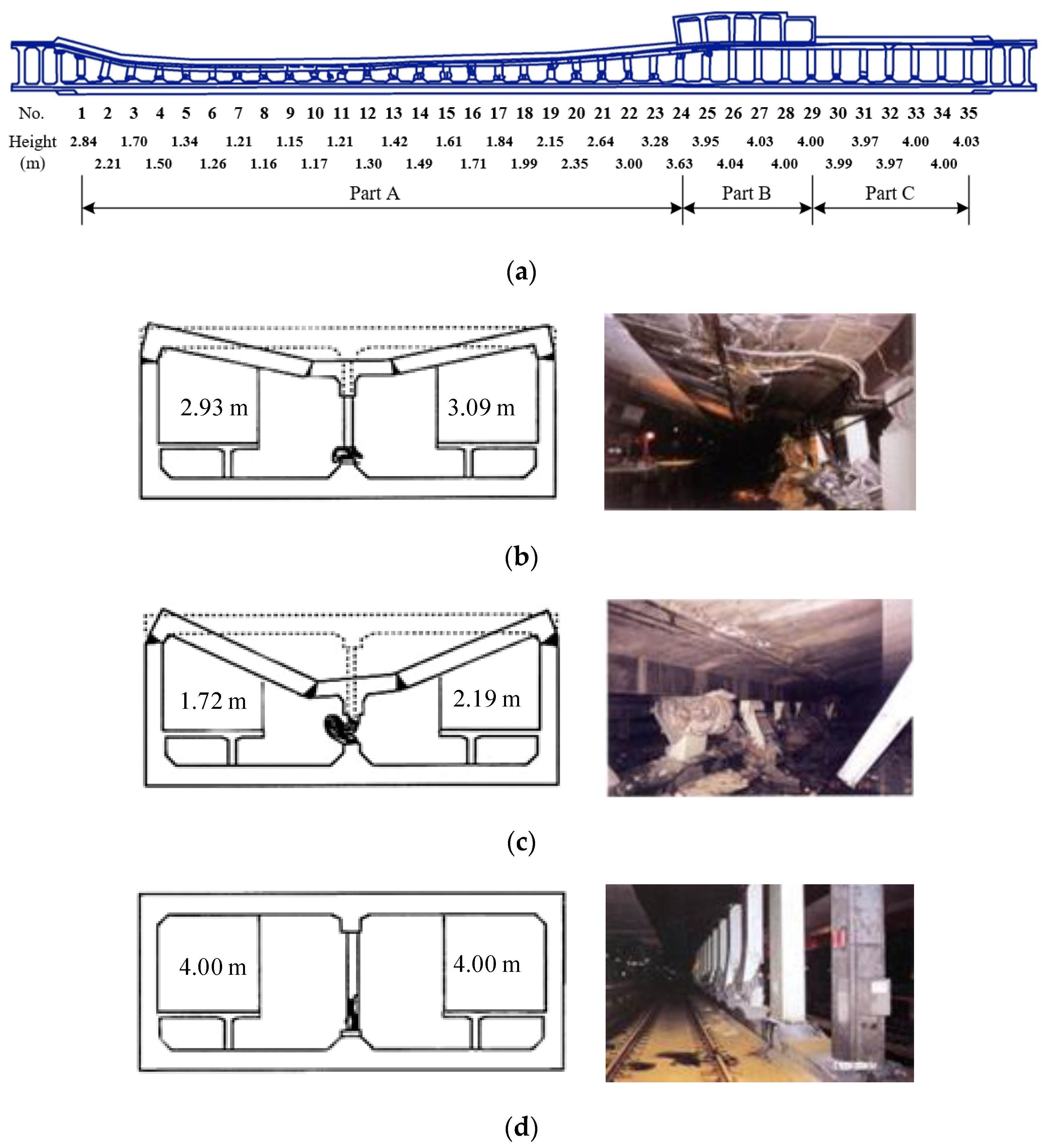
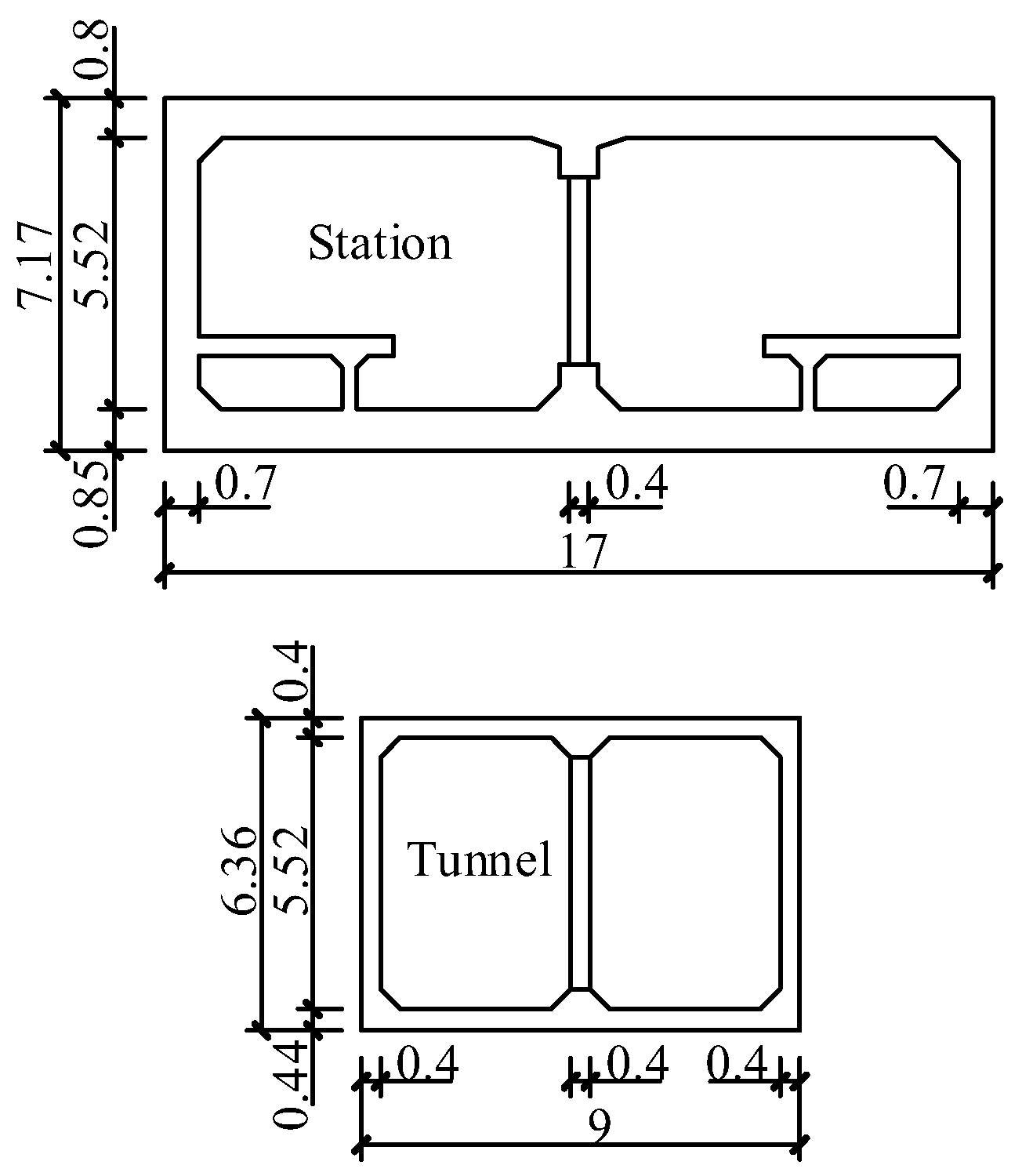
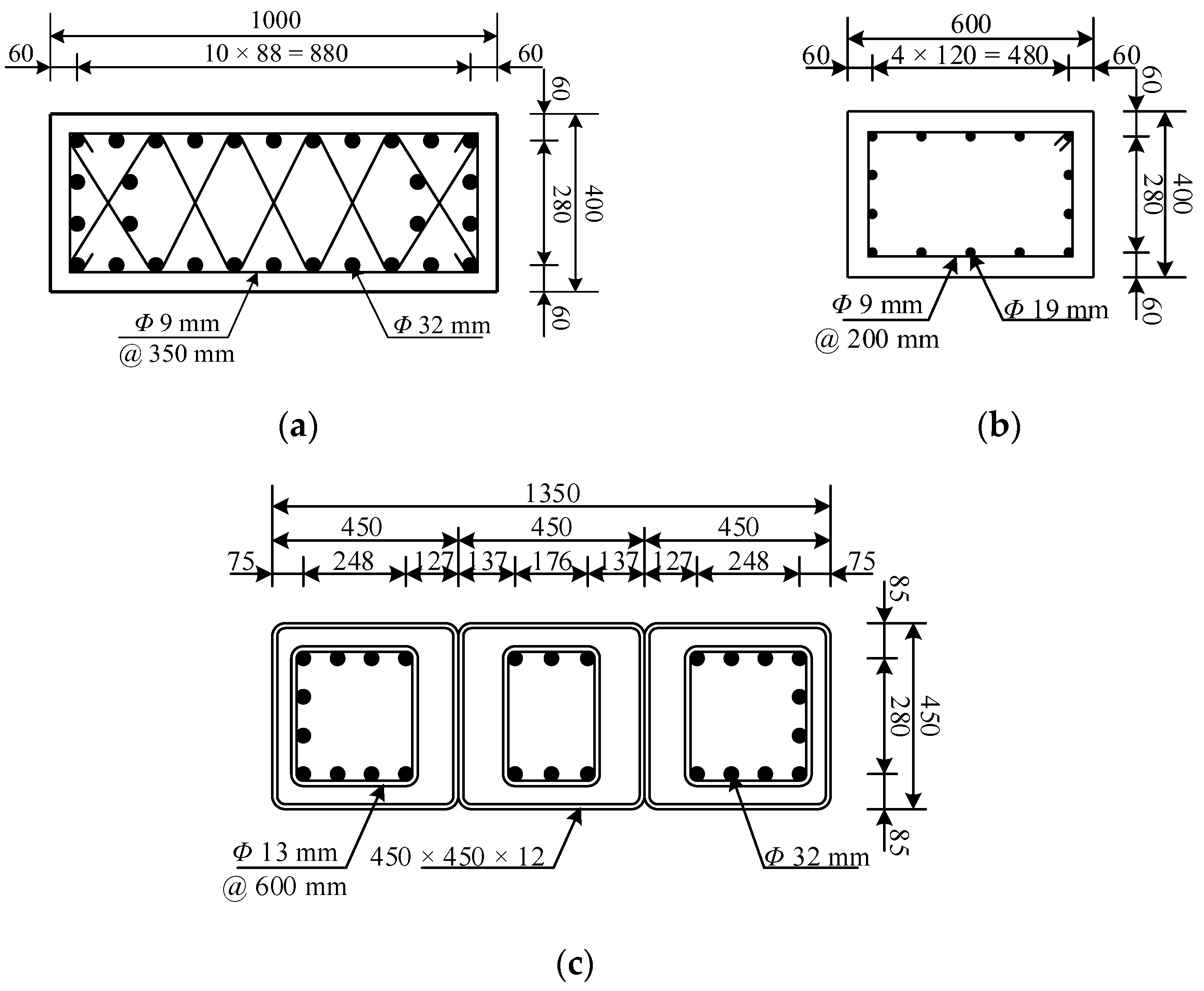
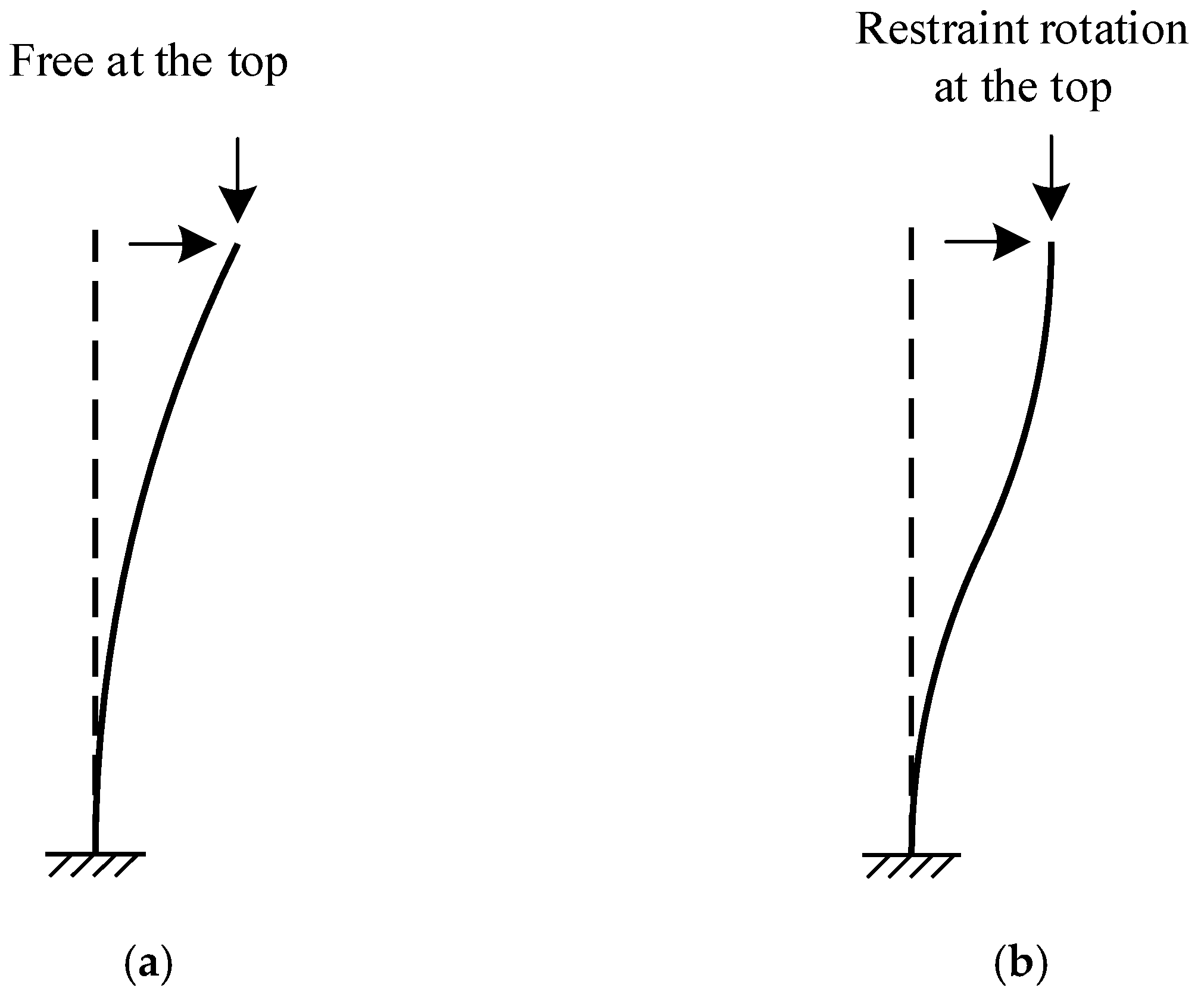





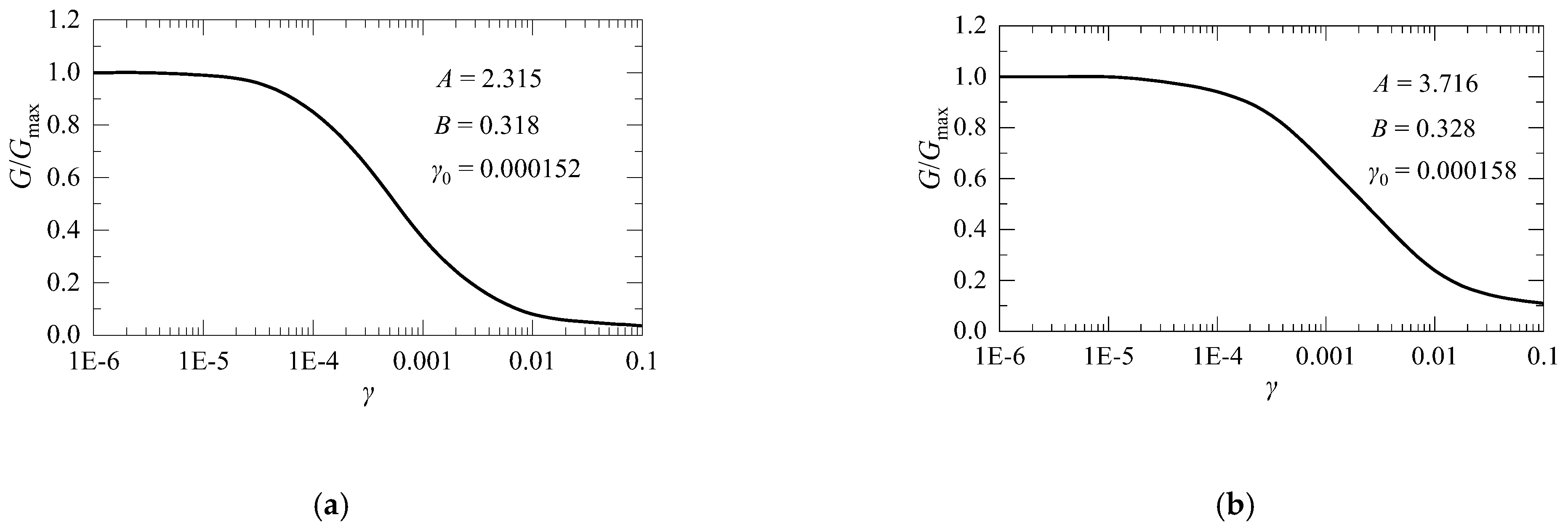
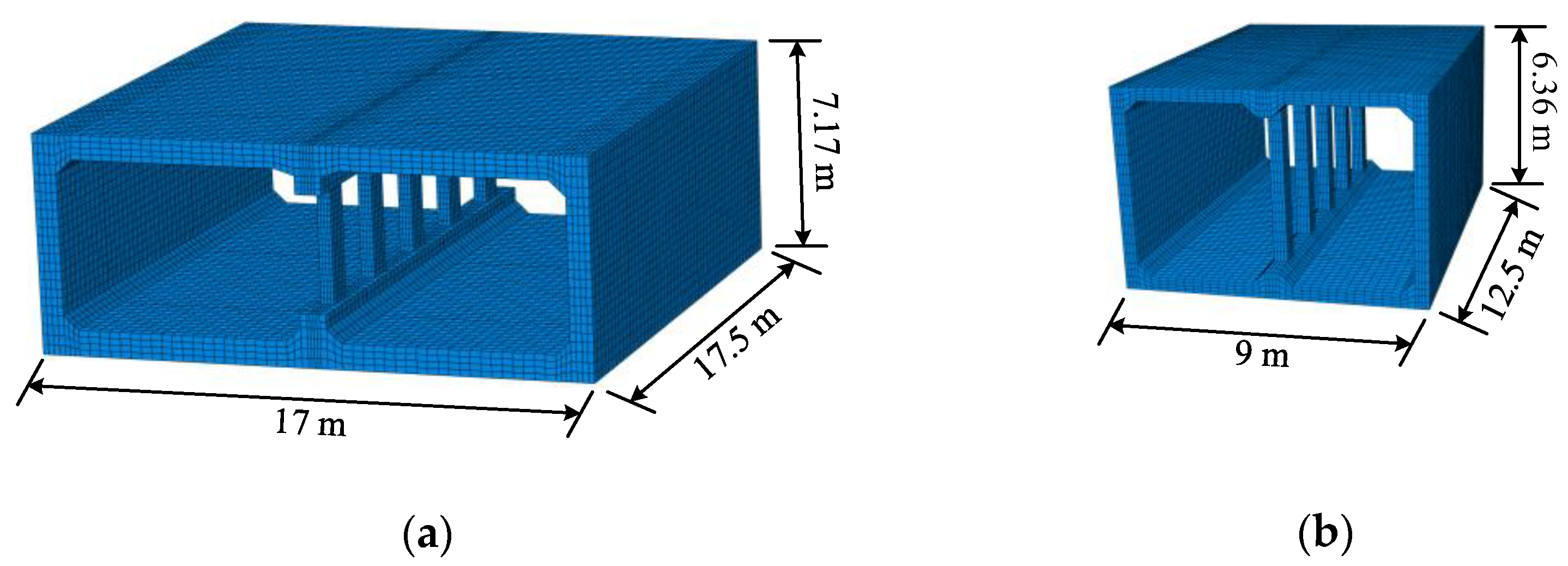
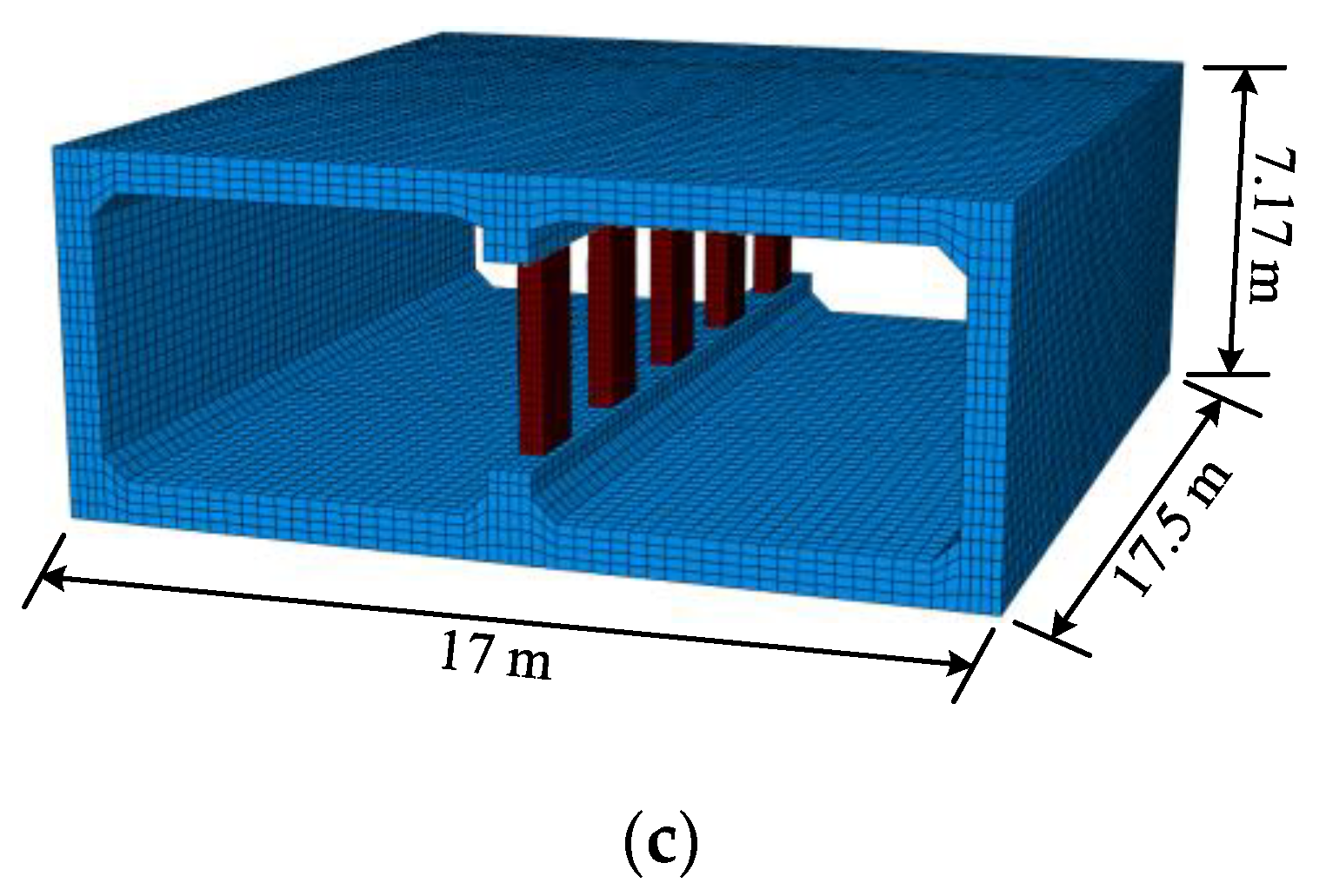
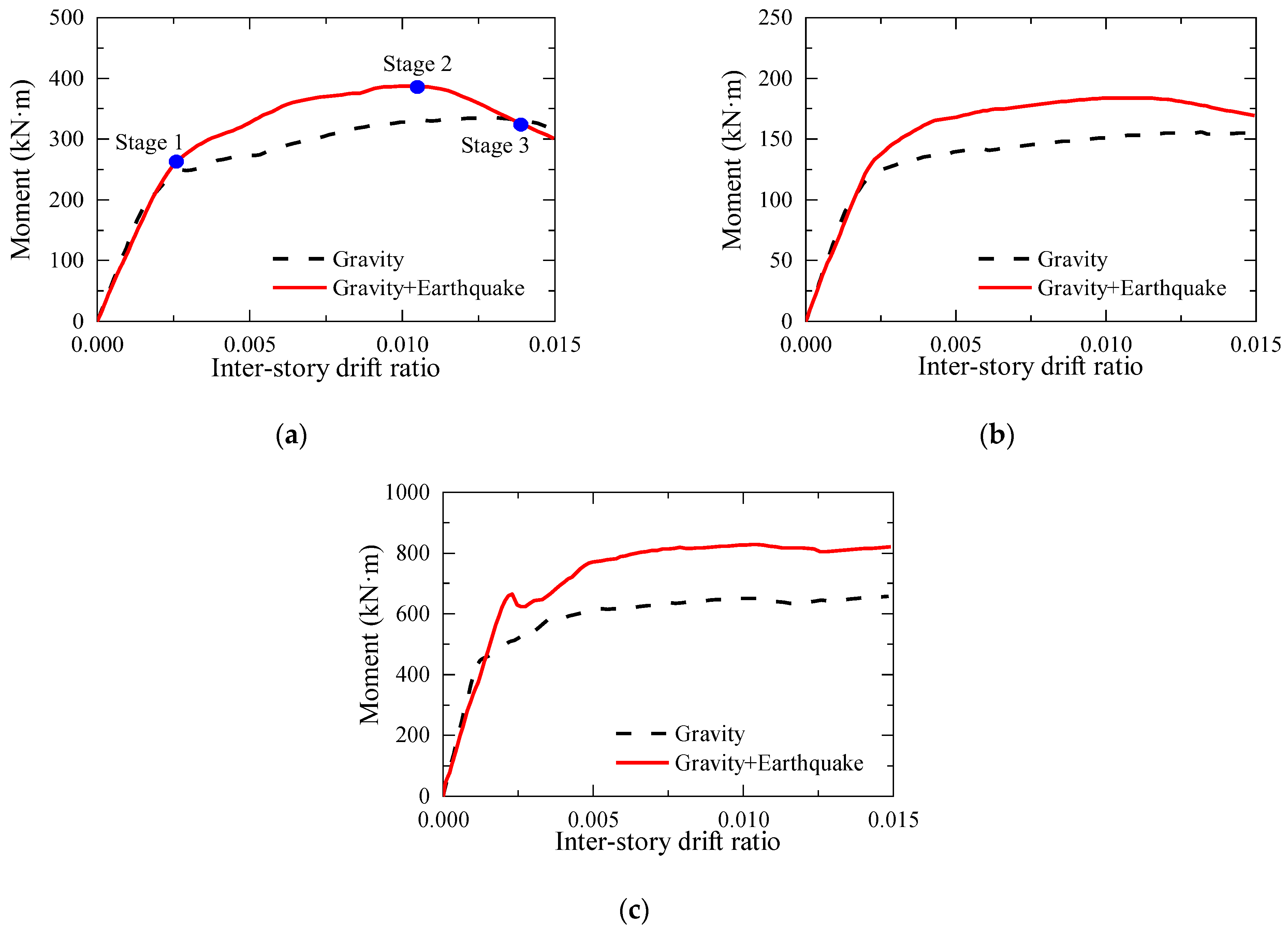

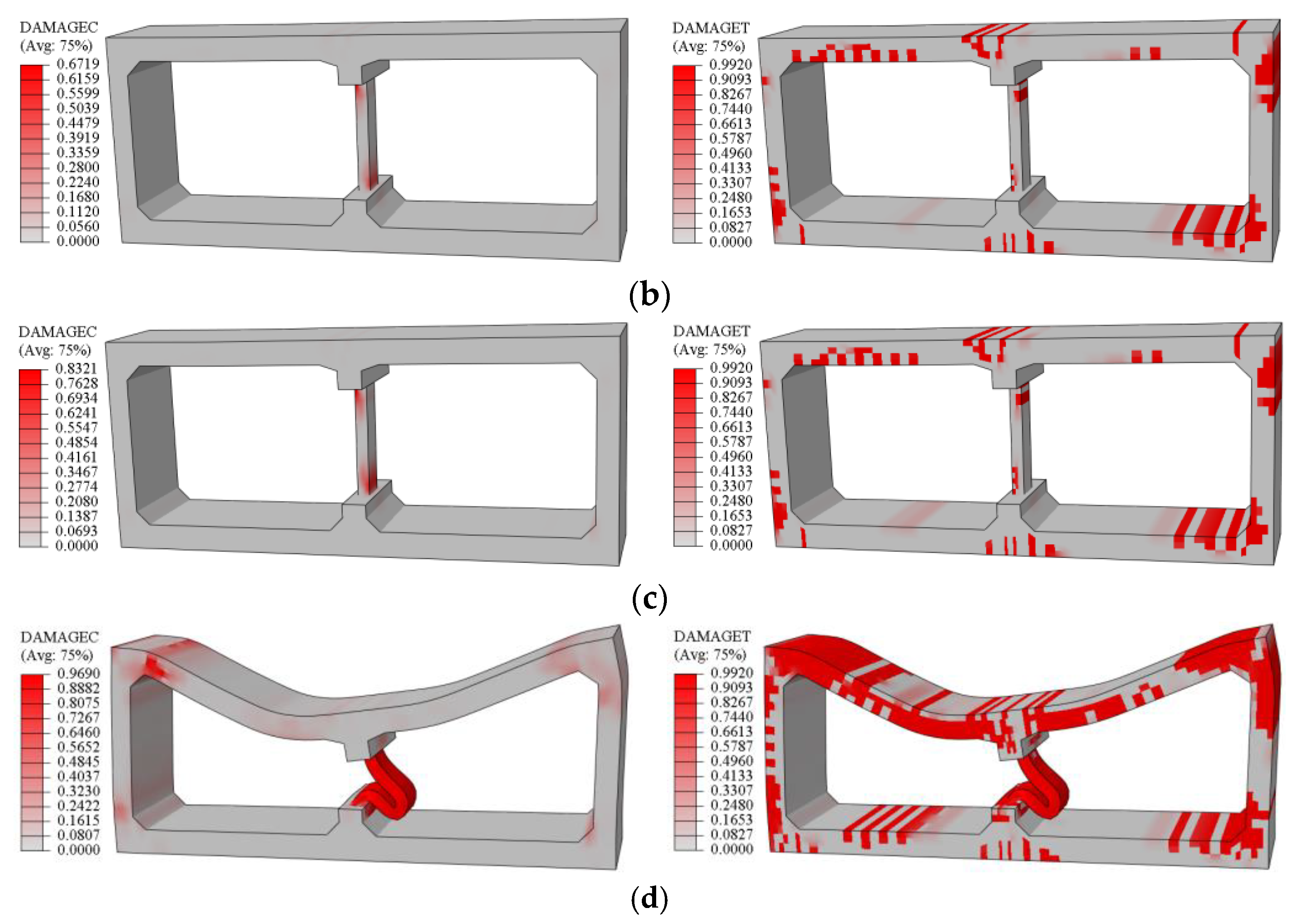
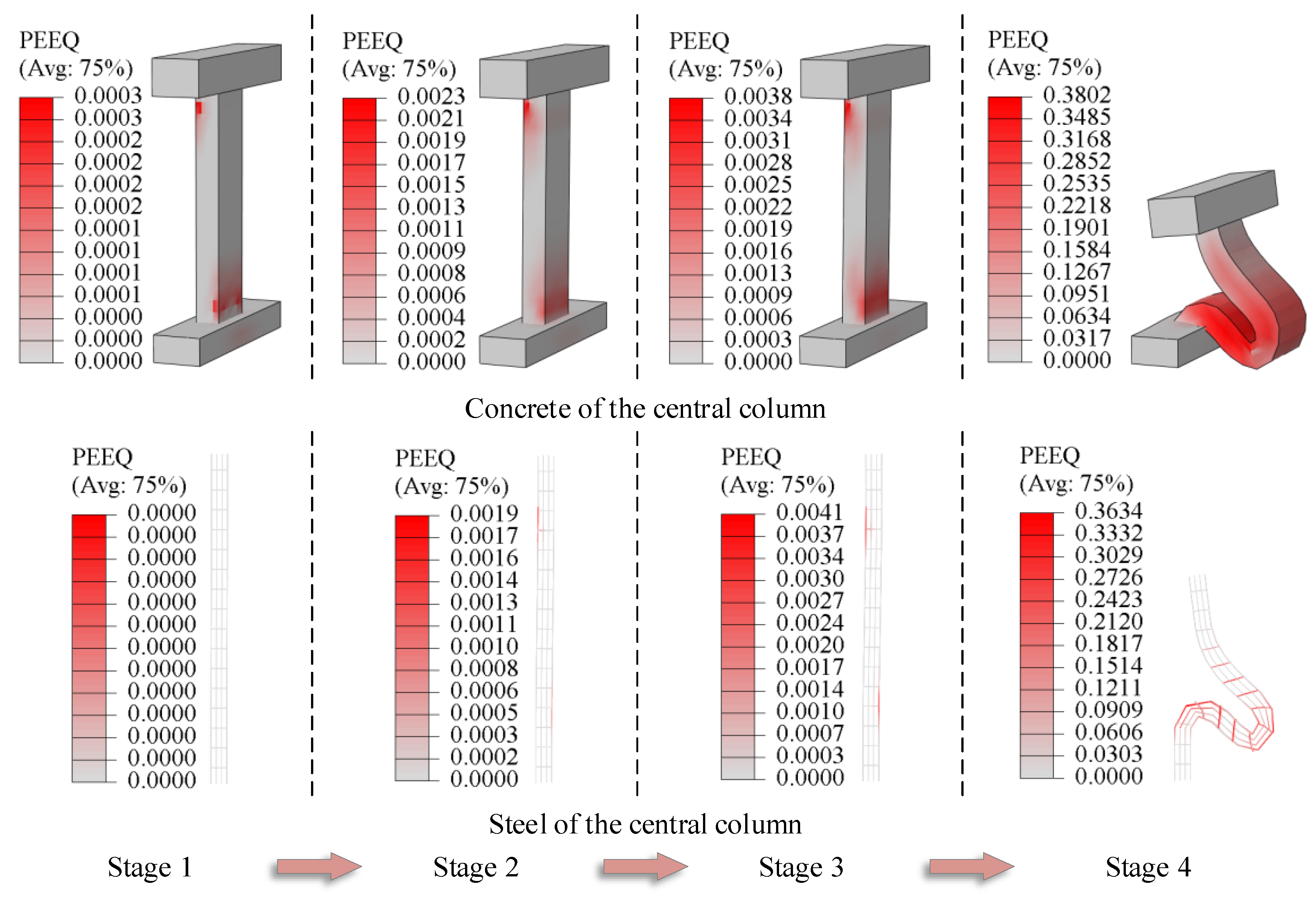

| Original Station | Original Tunnel | |||
|---|---|---|---|---|
| Cross Section | Longitudinal Reinforcement Ratio | Cross Section | Longitudinal Reinforcement Ratio | |
| Lateral wall | 0.7 m × 3.5 m | 0.8% | 0.4 m × 2.5 m | 1.1% |
| Central column | 0.4 m × 1.0 m | 6.0% | 0.4 m × 0.6 m | 5.6% |
| Top slab | 0.8 m × 3.5 m | 1.0% | 0.4 m × 2.5 m | 1.1% |
| Bottom slab | 0.85 m × 3.5 m | 1.0% | 0.4 m × 2.5 m | 1.1% |
| Model | Axial Force of Lateral Wall (kN) | Shear Force of Lateral Wall (kN) | Bending Moment of Lateral Wall (kN·m) | Axial Force of Central Column (kN) | Shear Force of Central Column (kN) | Bending Moment of Central Column (kN·m) |
|---|---|---|---|---|---|---|
| Station | ||||||
| VIF-RDM | 525.43 | 554.99 | 1623.78 | 792.78 | 72.83 | 208.88 |
| IVIF-RDM | 546.84 | 637.94 | 1673.90 | 755.42 | 66.13 | 186.29 |
| Tunnel | ||||||
| VIF-RDM | 311.26 | 278.66 | 496.91 | 384.18 | 77.01 | 199.19 |
| IVIF-RDM | 457.47 | 321.87 | 540.24 | 365.76 | 74.58 | 190.83 |
Disclaimer/Publisher’s Note: The statements, opinions and data contained in all publications are solely those of the individual author(s) and contributor(s) and not of MDPI and/or the editor(s). MDPI and/or the editor(s) disclaim responsibility for any injury to people or property resulting from any ideas, methods, instructions or products referred to in the content. |
© 2023 by the authors. Licensee MDPI, Basel, Switzerland. This article is an open access article distributed under the terms and conditions of the Creative Commons Attribution (CC BY) license (https://creativecommons.org/licenses/by/4.0/).
Share and Cite
Yang, Y.; Cao, J.; Qu, R.; Xu, Z. Numerical Simulation of the Seismic Damage of Daikai Station Based on Pushover Analyses. Buildings 2023, 13, 760. https://doi.org/10.3390/buildings13030760
Yang Y, Cao J, Qu R, Xu Z. Numerical Simulation of the Seismic Damage of Daikai Station Based on Pushover Analyses. Buildings. 2023; 13(3):760. https://doi.org/10.3390/buildings13030760
Chicago/Turabian StyleYang, Yuefeng, Juanjuan Cao, Renquan Qu, and Zigang Xu. 2023. "Numerical Simulation of the Seismic Damage of Daikai Station Based on Pushover Analyses" Buildings 13, no. 3: 760. https://doi.org/10.3390/buildings13030760




